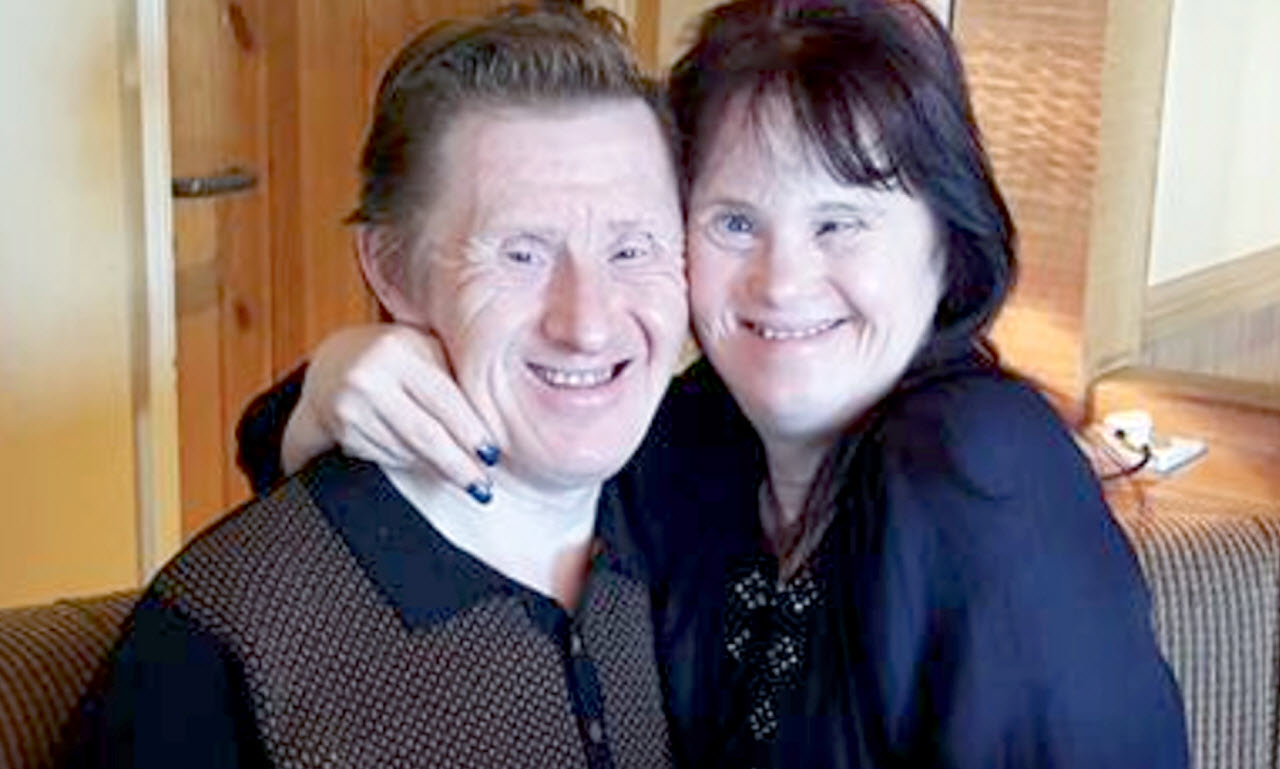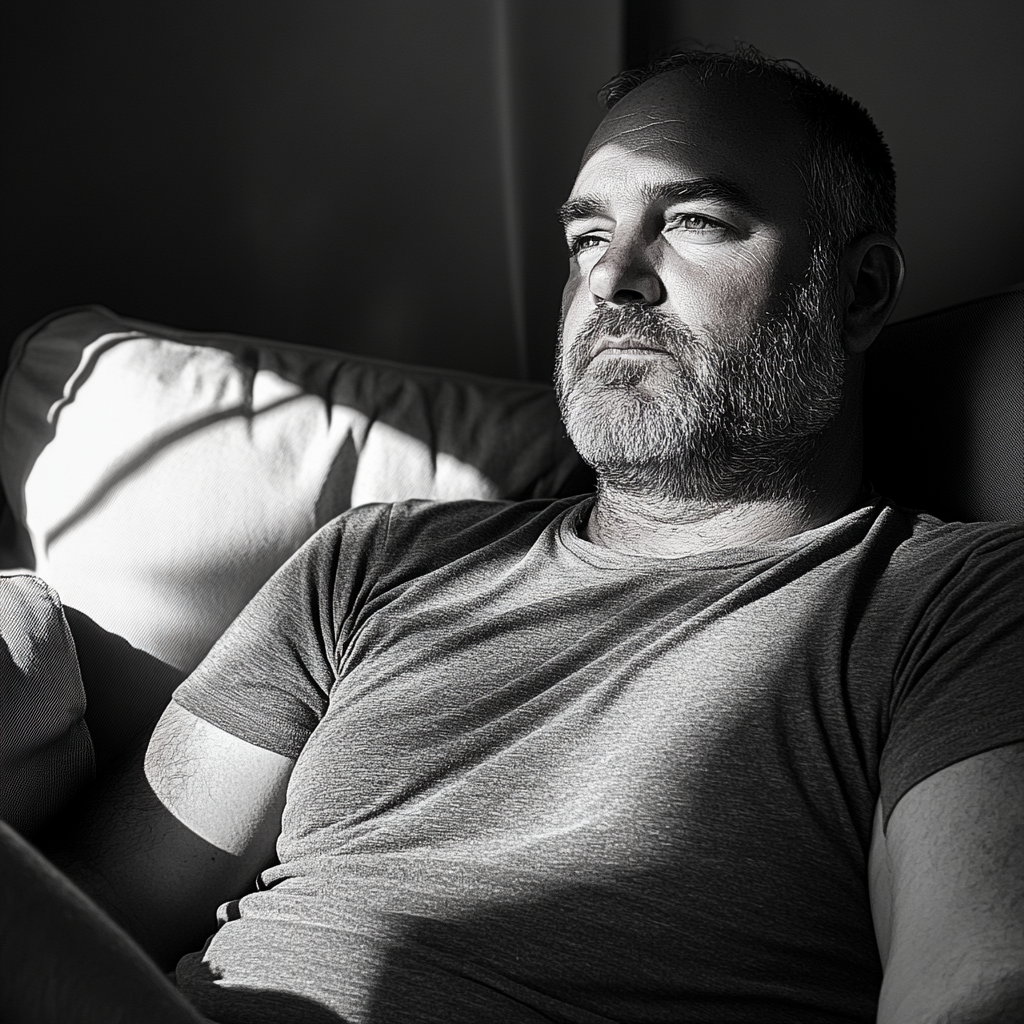There are many people who get married despite the fact that critics may doubt their ability to stay married for the long term. This often happens when we get married quickly or perhaps we are young and people don’t think we are yet responsible enough for the bond.
In 1995, there was a young couple who also were doubted but they ended up getting married and they stayed married for 25 years. They also were the first couple with Down syndrome in the UK to become husband and wife.

These days, we hear about people who have Down syndrome getting married on a regular basis. At that time, however, it was unheard of and it was the first time in the world that a couple with Down syndrome said I do.
Just like any other disability, however, those with Down syndrome have the ability to beat the odds, and certainly, that is what Tommy and Maryanne Pilling did. In fact, they are an inspiration to many who wonder if they have what it takes.
Maryanne was born in 1971. Her mother, Linda Martin, provided her with a loving atmosphere at home and she also had a sister who loved her as well. There were still times, however, when she struggled in life and she was even rejected by her father.

Since she was raised in a loving household, however, she grew up to be a very loving woman. It was easy to see in her lively personality.
Tommy was born in 1958 and was an only child. When he was 12 years old, he became an orphan and he grew up in a care home in Essex. He did have delayed development because of a lack of a support system, and he didn’t care much for his physical appearance.
When the two of them met in 1990, they were working in a kitchen in a training home for disabled individuals. He was 32 and she was 19 at the time.
It was easy to see how Maryanne felt about Tommy because she would absolutely light up when she spoke about him. They shared a number of common interests, such as music, cooking, movies, and doing craftwork.
Tommy also loved Elvis Pressley and the two of them would dance together on a regular basis. He would also let her know how much he loved her, and eventually, the family got accustomed to having him around.
18 months after they started dating, he proposed to her and asked her mother for permission to marry her daughter. The mother didn’t hesitate, she gave her blessings right away.
Other people, however, were not quite so positive about the idea of the two of them getting married. Some said that she wasn’t ready for it and some even asked about their sex life.
Despite the fact that they were criticized openly, they got married in 1995. 250 people came to the wedding, which was a fairytale for them.
They lived together with her family for seven years before moving into their own apartment next door. Her sister also moved along with them.
They have a very strong bond because he listens carefully when she speaks. There is never any type of hidden agenda and they love each other with their whole hearts.
Unfortunately, Tommy was hospitalized in 2020 after he was diagnosed with Alzheimer’s and then got COVID. Due to his declining health, he passed away. That was on January 1, 2021.
When the news was broken to her, she seemed to understand but still was a little confused about the situation. We are just glad that they had almost 30 years together, and they loved each other till the end.
My Parents Moved My Brother’s Things Into My New House While I Was on Vacation – It Was High Time I Brought Them Back to Earth

When Jeremy and his wife, Nina, get home from a vacation, they are horrified to find Ted, Jeremy’s slob of a brother, in their home. After a confrontation which leads to angry parents and Nina moving out, Jeremy forces Ted’s hand, making him move out…
When I came home from vacation, I was expecting to relax, maybe pop open a bottle of wine with my wife, and enjoy the peace of our home. Instead, we walked into a living room that looked like a complete frat house after a party from Hell.

A couple on vacation | Source: Midjourney
There were beer cans everywhere, dirty clothes tossed in random piles, and the smell, my goodness, the smell. And there, sprawled out on my couch like he owned the place, was my older brother, Theodore, or Ted, as everyone called him.
“Ted, what the hell? What is this? Why are you in my house?” I asked, trying to stay calm, though my blood pressure was rising by the second.
Nina, my wife, looked around our living room and rolled her eyes. In that moment, I knew that I had to fix it or I’d have to deal with a very upset wife.

A messy living room | Source: Midjourney
My brother looked up, casually, like I hadn’t just caught him red-handed.
“Oh, hey, Jeremy,” he said. “Mom and Dad figured that it would be easier if I just moved in while you were gone. You’ve got all this space, and it’s not like you’re using it, you know? You and Nina are either working or on vacation.”
I blinked, trying to process the audacity of his words.

A man sitting on a couch | Source: Midjourney
“You moved in? You moved into my house? Without asking? Ted, are you insane?”
He rolled his eyes, lifting his feet onto the couch and crossing them like he was about to watch a movie.
“Yeah, so what?” he said. “I needed a place to stay, and it’s not like you’d say yes. So, we decided to skip that part. Quit being so uptight, Jeremy. Just help a brother out.”

A man sitting on a couch | Source: Midjourney
It was like a switch flipped inside me, the years of watching him leech off my parents, his life one big excuse after another, and somehow, he was the victim here.
Now, he’d taken over my house. Really?
Just as I opened my mouth to speak, my phone rang. Mom. Of course.
I answered, trying to keep my voice as calm as possible.

A man holding his phone | Source: Midjourney
“Mom, did you and Dad seriously let Theodore move into my house while I was away?”
“Why are you using my full name?” Ted chimed in from the background.
I ignored him.
“Jeremy, don’t be so dramatic,” my mother said, not even a hint of apology in her voice. “Ted needed a place to stay, and you’ve got all that room. You don’t even have kids yet. So what’s the harm in helping out your brother?”

An annoyed woman | Source: Midjourney
I closed my eyes, taking a deep breath.
“Mom, he is 42 years old. He isn’t a kid. You’ve let him mooch off you for years, and you want to dump him on me? Are you being serious? Why do you want to treat him like he’s a kid just out of college?”
My mother’s tone shifted, and she immediately went on the defense.
“Oh, mooching, huh?” she said. “I’m disappointed in you, Jeremy. He’s been through a lot. You don’t understand what it’s like to be him. You’ve always had everything together. Ted needs a little more help. And as family, you owe it to him.”

A frowning man | Source: Midjourney
Been through a lot? My brother had two children under the age of five, with two different women. And he didn’t bother to support either of them. How was I supposed to feel sorry for this man?
Before I could respond, my father took the phone, his voice taking over my ear, sounding even more irritated.
“Jeremy, stop being selfish. You’ve got the money, the house, the wife. What’s the big deal? It’s your job to take care of your family. Ted is your brother. He is staying.”

Two young children | Source: Midjourney
I almost lost my mind. I almost let my anger take over me. But then I remembered that it just wasn’t my style. Ted might’ve thought that he had won this time, but I had a plan.
“It’s not about the space, Dad,” I said. “It’s about respect. Ted can’t just live here without my permission. Nina and I have worked hard for our home. And what’s even worse? My wife just has to deal with this, too.”
From the couch, Ted snorted.

A man sitting on a couch | Source: Midjourney
“Oh, come on. Don’t act like you’re all high and mighty. It’s just a house,” he said.
“But you’ve been freeloading off Mom and Dad for years. Why should I trust that you’d do anything differently here? Why can’t you stay with one of your kids and their mom?”
I thought that was the card that would have frustrated him. But he didn’t even flinch.

A frowning man | Source: Midjourney
“Because I’m family, that’s why. Why do you always act like I’m a stranger? It’s my right to stay here. Mom and Dad said that you’d be like this, but I didn’t think you’d be this bad.”
I was done.
“Fine, Ted,” I said. “You want to stay? Sure. Let’s see how that works out.”
I was fine with being horrible to my brother, I mean, someone had to teach him a lesson. But when I went upstairs to tell Nina about everything that had happened on the phone, she was highly frustrated.

A disgruntled man | Source: Midjourney
“Jer, you can’t be serious,” she said as I sat down on the bed across her.
“I’m going to fix it. I promise you, Nina. I’ll make this right. But I’m going to teach him a lesson first.”
“Well, I don’t want to be here for it. You have a week. Get him out, or I’ll stay gone,” she said.
“What do you mean by that?” I asked.

An annoyed woman | Source: Midjourney
“I’m going to my sister’s house, Jeremy. I can’t stand your brother, and I will not stay here while he’s here,” she said, packing a suitcase as she spoke.
“I’ll make this right, my love,” I promised her.
For the next week, I made Ted’s life a waking nightmare without ever raising my voice. And with Nina gone, I had a bigger incentive to get him out.

A woman packing a suitcase | Source: Midjourney
The first thing I did was disconnect the Wi-Fi. Ted, who spent most of his days glued to his phone or binge-watching shows on the TV, was completely lost.
He complained, but I just smiled.
“Oh, the internet? Yeah, it’s been spotty.”
Next, I shut off the hot water. Ted loved his long, lazy showers, but now he was greeted with ice-cold water every morning.

Water running in a shower | Source: Midjourney
“Must be something wrong with the plumbing,” I’d say innocently when he whined about it.
Then, there was the food.
I stocked the fridge with nothing but tofu, vegetables, and the healthiest food I could find. Ted hated anything that wasn’t greasy or fried. And now, every time he opened the fridge, he groaned like I was starving him.
“You’re family, right?” I’d say. “I’m sure you can deal with a little inconvenience. But it’s for my health, so you’ll be fine.”

An array of healthy food | Source: Midjourney
To top it all off, I started blasting music at 6 a.m. every day while I had my treadmill session in the gym room. I figured if Ted wasn’t going to contribute to the household, the least he could do was get up early.
He hated it all, of course. And by day five, he looked like he was on the verge of losing his mind.
“Jeremy, man, this is BS,” Ted said one morning, his voice filled with frustration. “I can’t stay here. How do you live like this? No Wi-Fi, no hot water, and no food I enjoy. This is torture.”

A man on a treadmill | Source: Midjourney
I raised an eyebrow.
“I thought you’d be grateful to stay, Ted. It’s not like you’re paying rent or contributing anything. What’s the problem?”
He grumbled something under his breath, clearly fuming.
“Forget it, I’m going back to Mom and Dad’s.”

An annoyed man | Source: Midjourney
As he stormed out, dragging his junk with him, I couldn’t help but smile.
But I wasn’t done yet. I cleaned the house top to bottom, went out to get proper groceries, and cooked Nina a good meal. I had already called her during the day and told her that Ted was gone.
“Come home, honey,” I said.
“I’ll see you later,” she said, and I could hear the smile in her voice.

A smiling woman | Source: Midjourney
While waiting for Nina to shower, I knew that there was just one more thing to do.
“Mom, Dad,” I said on the phone. “Ted’s out of my house. And he won’t be coming back again. He’s your problem again.”
My mother was furious.
“Jeremy, you can’t just kick him out! Where will he go?”
“That’s up to Ted, Mom. He’s 42. If you guys want to keep coddling him, go ahead. But I’m done.”

A man talking on the phone | Source: Midjourney
After that, I heard that Ted moved back into my parents’ house, but they demanded that he transform the garage into his own space. They forced him to get a job.
Ted was upset, of course, so they blamed it all on me. But I was fine with that. Nina and I had our home back, and we were at peace.

A garage converted into a bedroom | Source: Midjourney
What would you have done?
If you enjoyed this story, here’s another one for you |
My Husband ‘Accidentally’ Locked Me in the Basement to Watch Basketball with His Friends at Our House
Dani cannot stand her husband’s friends. So when Ethan brings up the possibility of having them over to watch a basketball game, she shuts down the idea. On the evening of the game, Dani finds herself going into the basement to get a pack of beer, but before she knows it, she’s locked inside. What happens next?…
I should have just said no from the start. Not just when Ethan brought up the idea of his friends coming over for dinner. I mean way before that, like when I first realized how awful they were. I never outright said that I didn’t hate them, but let me be honest with you: I think I made it pretty clear.

An annoyed woman | Source: Midjourney
But my husband, Ethan?
He’s so different from these guys. At 35, he’s a successful manager at a tech company, and for reasons that I will never understand, he’s still friends with the same guys he went to high school with.
They’re loud, rude, and completely unlike Ethan. They’re everything he left behind when he made something of himself.
Except, apparently, his loyalty to them.

A man sitting in his office | Source: Midjourney
“Dani, it’s just one game,” he said that night, sitting in the kitchen with a hopeful grin. “The guys really want to watch the game here. They’re dying to see our new TV setup. It’ll be fun!”
I sighed, trying to stay calm. I could almost see the dreadful evening unfolding. I knew that Ethan’s friends would take over the house, inappropriate comments getting into every conversation.
“Ethan, you know how I feel about them. Every single time they come over, it’s like our house gets turned into a frat house. I’m not cleaning up after them again. It’s not happening.”

A man sitting at a kitchen counter | Source: Midjourney
My husband’s face dropped, a look of wounded pride flashing in his eyes.
This work is inspired by real events and people, but it has been fictionalized for creative purposes. Names, characters, and details have been changed to protect privacy and enhance the narrative. Any resemblance to actual persons, living or dead, or actual events is purely coincidental and not intended by the author.
The author and publisher make no claims to the accuracy of events or the portrayal of characters and are not liable for any misinterpretation. This story is provided “as is,” and any opinions expressed are those of the characters and do not reflect the views of the author or publisher.



Leave a Reply